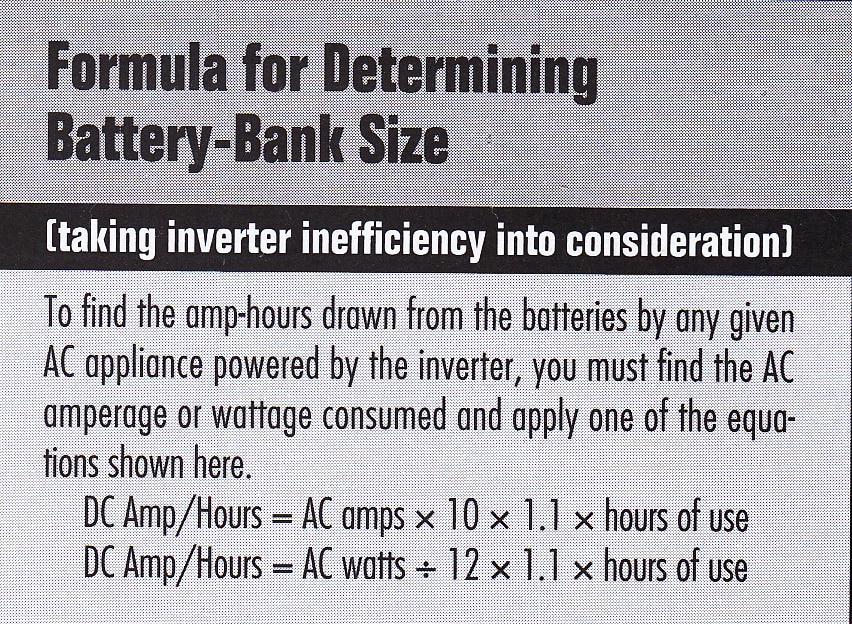
battery bank sizing_3447.jpg
Overnight a really good question came in from Dave in California about some comments that were made by a marine surveyor on a report to a potential boat buyer. Its worth sharing this because it raises several good points; one about the integrity of some surveyors and two about the limits of AC power on board that is provided by a DC to AC inverter.

Inverter Collection
Of all the things that a boat owner can install on their boat an inverter is perhaps one of the most magical. With an inverter you can take battery power and turn it into almost the same thing as the shorepower that comes down the dock and through that fat yellow cord into your boat. The stuff you need to run hairdryers and flat screen TV’s. But, there are some limits here. First to the question that Dave sent in:
Ed,
“Recently a surveyor called out the following as an issue with a boat’s wiring system:
“The inverter is wired to power all the circuits of the AC electrical panel. The inverter should only power the ‘outlets’ breaker.”
The boater knows for example not to run the inverter to heat his onboard water but Is there any specific code in the ABYC standards that says having the boat wired this way a no-no? The boat does have a provision to make it impossible to have the shore power and inverter powering the AC hot bus bar at the same time; and it has been test run this way with no issues. Thoughts?”
Dave
OK, so lets sort this out. First of all the surveyor is presenting his opinion only. There is nowhere within ABYC Standards where this statement is made. The Standards do dictate that a break before make switching configuration be provided to ensure that a boat owner can’t inadvertently activate shore power simultaneously with inverter power but as for how much equipment the inverter is connected to on the boat, well that’s between the installer of the inverter and/or the boat owner. ABYC is silent on that issue.
What the boat owner needs to understand is that all inverters have a finite limit as to how much power they can actually create. Further, there is a trade-off and some loss from the battery power used to create AC power within the inverter. The loss will vary, but it runs from about 10%-15%. No inverter is 100% efficient, although some I’ve tested within the last two years were running at up to about 93% efficiency.
What I’m referring to here is the amount of DC amps it takes to create X amount of AC wattage.
At the end of the day people this all boils down to two things, the rating of the inverter, 1000 watts, 2000 watts, 3000 watts etc. and secondly how long you intend to run the appliance. I refer to this as your “appetite for amps”. The table below which comes from my book entitled “The Powerboater’s Guide to Electrical Systems” explains how you go about calculating your own appetite for amps based on an assumed 90% efficiency for the inverter. Keep in mind that all AC applicances used will have either operating volts and amps or operating volts and watts embossed on a label somewhere on the appliance. By dividing volts into watts, you can calculate the amperage needed to run the appliance. also keep in mind that if you own a sailboat and not a power boat, the above mentioned book will serve you just as well, the electricity involved here really has no idea what type of boat it is on…….

When all is said and done, the size of the battery bank needed to supply and feed that appetite for amps will be the limiting factor. Most boats run out of real estate to store batteries. Keep in mind that to ensure acceptible battery cycle life, you really only want to discharge conventional batteries down to about 50% of their amp-hour capacity, for for example a battery with a 100 amp/hour capacity should only use 50 of those amp hours on a regular basis.







